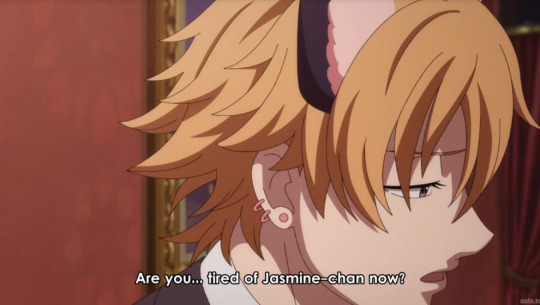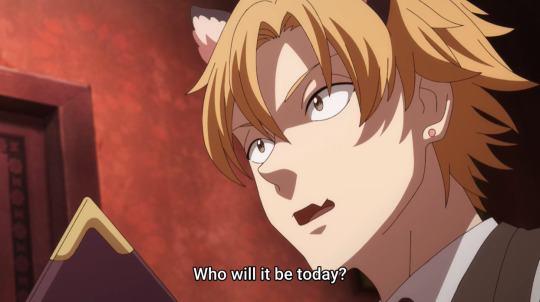#segmented cost analysis
Explore tagged Tumblr posts
Text
Why a Commercial Estimating Service Is Essential for Mixed-Use Development Projects
Mixed-use development projects combine residential, commercial, hospitality, and sometimes institutional or cultural spaces into a single cohesive plan. While these projects offer vibrant, multi-functional communities and increased land-use efficiency, they also come with high complexity in both design and budgeting. A commercial estimating service is essential in navigating this complexity, helping stakeholders control costs, balance program requirements, and streamline planning from preconstruction through completion.
Understanding the Complexity of Mixed-Use Projects
Unlike single-purpose developments, mixed-use projects demand coordination between multiple functions—each with its own codes, building systems, and operational needs. Residential units may require soundproofing, individual HVAC units, and different egress requirements compared to commercial spaces. Retail tenants often have unique build-out requirements. Hospitality components may call for luxury finishes and complex mechanical systems.
A commercial estimating service brings structure to this multifaceted picture. Estimators break down the development into clearly defined zones, identify distinct cost drivers within each use, and prepare segmented estimates that allow developers to see how each component affects the total project cost.
Supporting Phased Construction and Cash Flow Planning
Mixed-use projects are often developed in phases due to financing, permitting, or logistical constraints. For instance, a developer may prioritize the retail podium and parking garage before proceeding with upper-level residential or hotel components.
Commercial estimating services support phased planning by producing detailed construction cost breakdowns by stage. This allows developers to align funding disbursements with construction sequencing and helps financial institutions assess risk based on projected cash flow needs.
Accounting for Shared Infrastructure
Mixed-use buildings typically rely on shared infrastructure—such as common mechanical rooms, centralized elevators, or joint-use amenities like lobbies, fitness centers, and parking structures. Allocating the costs of these shared systems accurately across the different uses is vital for budgeting, accounting, and financing.
Estimators evaluate how shared systems are used across program types and assign costs proportionally. This is especially important when different ownership structures are involved, such as when retail is held by one entity and residential by another.
Navigating Diverse Code Requirements
Each use within a mixed-use building is subject to specific building codes, occupancy classifications, fire safety standards, and ADA accessibility mandates. For example, a restaurant tenant may require commercial-grade ventilation and fire suppression systems, while hotel units may need emergency power and elevator recall.
A commercial estimating service works closely with architects, engineers, and code consultants to ensure that these varied code requirements are identified and accurately priced. This avoids surprises during plan review and ensures the project remains compliant without triggering costly redesigns.
Managing Tenant Improvements and Flexibility
Retail and commercial tenants often negotiate for custom build-outs and improvements beyond base building construction. These can include upgraded flooring, lighting, storefronts, signage, and even plumbing or kitchen installations.
Estimators provide separate allowances or hard numbers for these improvements, depending on lease terms and tenant agreements. This ensures both landlords and tenants understand their financial responsibilities and can plan accordingly. Where flexibility is needed for future changes in occupancy, the estimating service can price adaptable infrastructure (e.g., movable walls or modular utility connections).
Supporting Financial Feasibility and Pro Forma Development
One of the most critical early tasks in a mixed-use development is determining whether the project “pencils out.” Estimators play a key role by feeding accurate, data-backed construction costs into financial models. This enables developers to calculate projected returns, identify financing gaps, and secure investment based on realistic cost assessments.
If preliminary costs exceed target budgets, the estimating service can assist in value engineering—offering options that reduce costs while preserving project quality and functionality.
Enabling Efficient Procurement and Scheduling
With multiple project components running in parallel, procurement needs to be strategically managed. Items such as curtain walls, elevators, and mechanical systems may serve multiple building areas and must be ordered with precise specifications and lead times.
A commercial estimating service helps map out procurement schedules by forecasting long-lead items and aligning order timelines with construction phases. This prevents bottlenecks and enables better coordination across trades and suppliers.
Enhancing Owner and Stakeholder Communication
Mixed-use projects often involve multiple stakeholders—municipalities, investors, joint-venture partners, anchor tenants, and future residents. A clear, structured cost estimate enhances communication by showing how funds will be spent and which portions of the project account for the greatest investment.
By offering segmented and visualized estimates, commercial estimating services make it easier for all parties to understand the financial scope of the project and build confidence in the development team’s planning capabilities.
Conclusion
The integrated nature of mixed-use developments presents both opportunity and complexity. A commercial estimating service serves as the financial compass that helps developers navigate this intricate landscape. From phased construction and shared infrastructure to diverse codes and tenant expectations, estimators bring clarity, precision, and adaptability to ensure these ambitious projects remain financially viable and strategically sound. In the world of mixed-use construction, accurate cost estimation isn’t just beneficial—it’s indispensable.
#commercial estimating service#mixed-use project estimate#residential and retail cost#hotel construction estimate#tenant improvement costs#phased development budgeting#shared system allocation#MEP estimating#occupancy code estimate#ADA compliance cost#construction cash flow#pro forma cost inputs#segmented cost analysis#cost breakdown by use#high-rise mixed use estimating#commercial tenant allowances#hospitality build-out costs#retail shell pricing#value engineering mixed-use#estimating for development feasibility#multi-zone construction costs#LEED estimating mixed use#parking garage cost#procurement timeline planning#long-lead item estimates#construction financing support#estimating shared amenities#mixed-use coordination cost#architectural budgeting support#developer financial modeling
0 notes
Text
Cost Segregation Real Estate - Ultimate Guide
cost segregation real estate is an effective strategy for all passive investors. learn key benefits of this tax deferral strategy. cost segregation real estate.
#cost segregation real estate#investing in syndications#real estate cost segregation#cost segregation depreciation#cost segregation example#cost segregation analysis real estate#cost segregation depreciation guide#cost segmentation land#cost segregation categories#cost segregation defined
0 notes
Text
Unveiling Churn Analysis in Banking and Its Benefits
In the realm of banking, understanding customer behavior is like deciphering a treasure map. Fortunately, churn analysis is the "X" that marks the spot. If you're wondering what churn analysis is and why it's a game-changer in the Indian banking landscape, read on.

What is Churn Analysis?
Churn analysis is like having a crystal ball for your bank's customer base. It involves studying customer data to identify those who are likely to leave (churn) and take their business elsewhere. It's not about predicting the future with mystic powers, but rather using data science to make informed decisions.
Also Read: The Influence Of Technology On The Finance Sector In India: A Paradigm Shift
Benefits of Churn Analysis
1. Customer Retention
Imagine you have a favorite neighborhood café. They know your order by heart, and you love the personalized service. Now, think about how great it would be if your bank offered the same level of personalized service. Churn analysis helps banks identify customers at risk of leaving, allowing them to tailor offers and services to keep these valuable clients onboard.
2. Cost Savings
Losing customers is not just emotionally draining; it's also costly. Acquiring new customers can be up to five times more expensive than retaining existing ones. Churn analysis helps banks save money by focusing on retaining customers rather than constantly chasing new ones.
3. Improved Products and Services
Churn analysis provides insights into why customers leave. It's like feedback on steroids. By understanding the pain points and issues that drive customers away, banks can make meaningful improvements to their products and services, enhancing the overall customer experience.
4. Targeted Marketing
Imagine receiving an offer for a home loan just when you're actively looking for one. It's like the universe is conspiring in your favor. Churn analysis helps banks identify the right customers for specific products or services, ensuring that marketing efforts are not wasted on disinterested parties.
5. Competitive Edge
In the fiercely competitive banking sector in India, staying ahead of the curve is vital. Banks that utilize churn analysis can proactively address customer issues, create more appealing offers, and ultimately gain a competitive edge in the market.
6. Predictive Analytics
Churn analysis doesn't just tell you who might leave; it also provides insights into when they might leave. This predictive aspect is a game-changer. Banks can take preventive actions before it's too late.
Also Read: What Is NPA And Its Impact On Indian Economy?
7. Customer Segmentation
Not all customers are the same. Churn analysis helps banks segment their customer base effectively. This allows for a more targeted approach in terms of marketing, customer service, and product development.
Conclusion
Churn analysis is like having a superpower in the world of banking. It empowers banks to retain customers, save costs, and stay ahead of the competition. It's not just about data; it's about using that data to create a better banking experience for customers.
0 notes
Text
"The majority of high-tech patent lawsuits are brought by patent trolls—companies that exist not to provide products or services, but primarily have a business using patents to threaten others’ work. Some politicians are proposing to make that bad situation worse. ...
The Patent Eligibility Restoration Act, S. 2140, (PERA), sponsored by Senators Thom Tillis (R-NC) and Chris Coons (D-DE) would be a huge gift to patent trolls, a few tech firms that aggressively license patents, and patent lawyers. For everyone else, it will be a huge loss. That’s why we’re opposing it, and asking our supporters to speak out as well.
Patent trolling is still a huge, multi-billion dollar problem that’s especially painful for small businesses and everyday internet users. But, in the last decade, we’ve made modest progress placing limits on patent trolling. The Supreme Court’s 2014 decision in Alice v. CLS Bank barred patents that were nothing more than abstract ideas with computer jargon added in. Using the Alice test, federal courts have kicked out a rogue’s gallery of hundreds of the worst patents.
Under Alice’s clear rules, courts threw out ridiculous patents on “matchmaking”, online picture menus, scavenger hunts, and online photo contests. The nation’s top patent court, the Federal Circuit, actually approved a patent on watching an ad online twice before the Alice rules finally made it clear that patents like that cannot be allowed. The patents on “bingo on a computer?” Gone under Alice. Patents on loyalty programs (on a computer)? Gone. Patents on upselling (with a computer)? All gone. ...
PERA’s attempt to roll back progress goes beyond computer technology. For almost 30 years, some biotech and pharmaceutical companies actually applied for, and were granted, patents on naturally occuring human genes. As a consequence, companies were able to monopolize diagnostic tests that relied on naturally occurring genes in order to help predict diseases such as breast cancer, making such testing far more expensive. The ACLU teamed up with doctors to confront this horrific practice, and sued. That lawsuit led to a historic victory in 2013 when the Supreme Court disallowed patents on human genes found in nature.
If PERA passes, it will explicitly overturn that ruling, allowing human genes to be patented once again. ...
“To See Your Own Blood, Your Own Genes”
From the 1980s until the 2013 Myriad decision, the U.S. Patent and Trademark Office granted patents on human genomic sequences. If researchers “isolated” the gene—a necessary part of analysis—they would then get a patent that described isolating, or purified, as a human process, and insist they weren’t getting a patent on the natural world itself.
But this concept of patenting an “isolated” gene was simply a word game, and a distinction without a difference. With the genetic patent in hand, the patent-holder could demand royalty payments from any kind of test or treatment involving that gene. And that’s exactly what Myriad Genetic did when they patented the BRCA1 and BRCA2 gene sequences, which are important indicators for the prevalence of breast or ovarian cancer.
Myriad’s patents significantly increased the cost of those tests to U.S. patients. The company even sent some doctors cease and desist letters, saying the doctors could not perform simple tests on their own patients—even looking at the gene sequences without Myriad’s permission would constitute patent infringement.
This behavior caused pathologists, scientists, and patients to band together with ACLU lawyers and challenge Myriad’s patents. They litigated all the way to the Supreme Court, and won. “A naturally occurring DNA segment is a product of nature and not patent eligible merely because it has been isolated,” the Supreme Court stated in Association for Molecular Pathology v. Myriad Genetics.
A practice like granting and enforcing patents on human genes should truly be left in the dustbin of history. It’s shocking that pro-patent lobbyists have convinced these Senators to introduce legislation seeking to reinstate such patents. Last month, the President of the College of American Pathologists published an op-ed reminding lawmakers and the public about the danger of patenting the human genome, calling gene patents “dangerous to the public welfare.”
As Lisbeth Ceriani, a breast cancer survivor and a plaintiff in the Myriad case said, “It’s a basic human right to see your own blood, your own genes.” "
240 notes
·
View notes
Note
The point is no one knows how many he or any these big accounts actually does have. This type of behavior aligns with the FACT he is not as popular as you all want him to be and explains why his engagement numbers are low and although he has 4M IG followers, you ask any random 100 people on the street in the US where his US based show is the most popular and not a one will have a clue who he is. He has about 250k fans and 25k fanatics. Not many to build a future career on and not many to hide some secret marriage, relationship to a co star who is legally married to someone else with one son.
Dear FACT Anon,
Brush up your grammar first, you begin your Orwellian Two Minutes Hate with another nonsense phrase: 'The point is no one knows how many he or any these big accounts actually does have.' This, you see, betrays you - enough said: your native language is a Germanic one, albeit not English and not German. Dutch, perhaps?
No one knows what, exactly? How many fans? How many followers? Quite different things indeed, and you surely know it: you logically still are a fan and show appreciation for what he does, even if you don't follow him on Instagram . You can't be that stupid as to presume all of his fans are just on Instagram, do you? Thus, how is some fluctuating index relevant in the great scheme of things? It is partial. It is segmented. It is easily explained by external factors, such as the ones I have described. Why you still cling to this cargo cult belief is just beyond me.
If S were Coca Cola and you were a hired consultant in charge of a global analysis of the brand, I would have fired you already. I don't care how the outlook is on the Ruritarian market only, the brief you would have gotten was to go global and come with the latest trends.
'you ask any random 100 people on the street in the US where his US based show is the most popular and not a one will have a clue who he is. He has about 250k fans and 25k fanatics.' Look at you talking, dear illiterate: 'not a one', when English has the very effective 'no one' or 'not a single one'. The rest comes from the spite and bile of a particular blogger, you all chose to snowball endlessly. It is wrong. It is strange. It is boring. I don't even know how you came up with these figures: instead of parroting whatever you have been told, kindly explain the method you used to reach them. Extrapolation has its limits and it is always used in order to artificially inflate, not deflate something at all costs. I see no point in entertaining this theory based on absolutely nothing.
But your point was not related to all of the above. All of the above was but a pretext for you to shove in your last phrase. I think you are in a very bad spot in your life, Anon. I'd seriously suggest to get help, at this point. You deserve better than this kind of ridiculous, pointless Internet joust.

58 notes
·
View notes
Text

Unwanted: Chapter 12, Unlucky - Pt. 2
Pairing: Bucky Barnes x Avenger!Fem!Reader
Summary: When your FWB relationship with your best friend Bucky Barnes turns into something more, you couldn’t be happier. That is, however, until a new Avenger sets her sights on your super soldier and he inadvertently breaks your heart. You take on a mission you might not be prepared for to put some distance between the two of you and open yourself up to past traumas. Too bad the only one who can help you heal is the one person you can no longer trust.
Warnings: (For this part only; see Story Masterlist for general Warnings) Language,
Word Count: 935
Previously On...: It's finally time to present your Crisis Prediction Algorithm to the Stark Industries' Board of Directors! EEP!
A/N: Another short part, but I'll be honest and tell you that this one has my all-time favorite Pocket/Tony interaction in it, so it was *so* much fun to write! I just love the dynamic between the two of them. And for a little Good News/Bad News: Bad News-- I'm heading off to New Orleans in a few hours Spring Break (like, I have to leave my house at 2:30am, it's godawful), so I'm not going to be very active on here for several days, and I'm not bringing my laptop (which is how I prefer to Tumblr, tbh). The Good News? I'm setting up scheduled updates so you'll keep getting your Unwanted segments in a timely fashion! I just won't be very interactive during that time period to update chapter links; you'll just have to find parts by navigating my feed. Sorry! I'll make it all better when I come home; promise.
Banner By: The absolutely amazing @mrsbuckybarnes1917!
Thank you to all those who have been reading; if you like what you've read, likes, comments, and reblogs give me life, and I truly appreciate them, and you!
Taglist: (Please let me know if you’d like to be added!) @jmeelee @cazellen @blackhawkfanatic @les-sel @marcswife21 @buckybarnessimpp @mrsbuckybarnes1917 @erelierraceala @hayjat @capswife @itsteambarnes @jupiter-107 @marygoddessofmischief @sebastians-love @learisa @lethallyprotected @rabbitrabbit12321 @buckybarnesandmarvel @fanfictiongirl77 @calwitch @fantasyfootballchampion @selella @jackiehollanderr @wintercrows @sashaisready @missvelvetsstuff @angelbabyyy99 @keylimebeag @maybefoxysouls @vicmc624 @sashaisready @j23r23 @wintercrows @crist1216 @cjand10 @doublejeon @pattiemac1
To your absolute delight, and no surprise to Bucky, the presentation went off without a hitch. The board was impressed with the level of detail you’d put into your work, and the extensive data you had to show from your months of trials. You’d managed to succinctly answer every question they brought up concerning protecting civilian privacy, system security, and cost/benefit analysis to their satisfaction.
When the time came for the board to vote, you held your breath, squeezing Bucky’s hand under the table as each member called out their ‘yay’ or ‘nay.’ When it was all said and done, the overwhelming majority had voted for Stark Industries to fund the implementation of the crisis prediction algorithm system, tentatively now called C-PAS, with the only votes against being concerned about cost, and not the benefits or merits of it. You couldn’t have been happier.
In celebration, Tony and Pepper took you and Bucky out to dinner at one of the most exclusive rooftop restaurants in the city. Now, as the Stark Industries’ CTO, you were definitely not hard up for money, by any stretch of the imagination, but the atmosphere around you was beyond anything you’d normally immerse yourself in.
“Here’s to our girl!” Tony exclaimed, raising a glass of 1998 Rosé Dom Pérignon. You blushed as Bucky and Pepper raised their glasses in your honor before you all took a sip. “I’m so proud of you, Pocket. I couldn’t be prouder if I had done it myself, so you know that’s saying something.”
You laughed at that. “Thank you, Boss,” you said, raising your glass to him. “That is truly a rare compliment, coming from you.”
“Don’t mention it, kiddo. Can’t think of a single person more deserving of the success than you.”
You ducked your face, trying to hide the flush of pride and embarrassment that was now coloring your cheeks. No matter your accomplishments, you would never become accustomed to being acknowledged for doing something well.
Bucky grabbed your hand and gave it a gentle squeeze before bringing it to his lips. “He’s right, sweets. You’ve worked so hard for this, and you deserve to be celebrated for it. Not that often Stark and I can whole-heartedly agree on something, but we’re of like minds on that.”
You hid your face in your hands as Tony smirked at Bucky and raised his glass in salute.
“Boys,” Pepper interjected with a soft laugh, “while I completely agree with your shared assessment, you’re going to kill Pocket from embarrassment.”
“Thank you, Pep,” you murmured through your fingers.
“Alright, alright,” Tony said with a laugh, “subject change. So Barnes, when are you going to make an honest woman of our girl and weirdly become my brother-in-law? Huh– there’s a phrase I never expected to utter.”
You nearly choked on the piece of bread you’d been nibbling on as Bucky began spluttering on his mouthful of champagne. You cleared your throat and put a reassuring hand on Bucky’s knee. “If that becomes a topic that needs to be discussed, Tony, you will definitely be one of the first handful of people to know.”
“The first handful?” Tony cried, face affronted. “I should be number two, at least!”
“Number two?!” you asked him incredulously. “Come on, you egomaniac! How the fuck do you figure that?”
“Easy,” Tony said, leaning over the table toward you. “Barnes knows first because he decides he wants to marry you for some reason known only to him and his maker, he asks me for my blessing, and then you can find out after. So, number two! Come to think of it, you’ll probably be fifth to know, because I’m sure he’ll tell Capsicle after me, and of course I’ll tell Pepper, so it’s actually you in the first handful, not me.”
You rolled your eyes at him. “Oh really?” you asked, and he nodded, smirking at you. “Well, in that case, what number is Pep going to be when you decide to get your ass in gear and make an honest woman out of her? No offense, Pep,” you added quickly.
“None taken, honey, but are you both positive you’re not actually siblings?” Pepper laughed.
You and Tony both snorted, rolled your eyes, and muttered “He/She wishes” at the same time, which caused your entire table to laugh, breaking any tension that might have remained following Tony’s mention of a possible engagement.
From there, the conversation flowed to much less loaded topics, and soon your third course dishes were being cleared. You were feeling slightly buzzed from the champagne and were devilishly seeing how far you could push Bucky by tracing your hand along his upper thigh when Tony’s phone rang.
“Tony,” Pepper chastised as he pulled out the device to look at the screen. “I thought we agreed on no calls during couple’s time?”
You quickly shot Bucky a teasing look as if to say “see?”
“Sorry, honey, but it’s the emergencies-only line.” He put the phone to his ear. “Talk to me, Banner. … When did they get in? … WHAT?! … How? … Is he…? … No, I got it. We’re on our way.” Tony stood up abruptly from the table, ending the call.
“Tony, what–” Pepper began, but Tony put his hand on her arm, pulling her up and cutting her off.
“Wilson, Carthage, and Rhodes just landed from the Malaysia mission,” he began, his face stone serious. It was a look you hated seeing on his face, because it meant something was horribly wrong. “Rhodey’s been hurt. It’s bad. We need to get home. Now.”
<- Previous Part / Next Part ->
#bucky barnes x reader#bucky barnes x you#bucky barnes x y/n#bucky x you#bucky x reader#bucky fanfic#bucky barnes#bucky barnes fanfic#bucky x female reader#bucky barnes fic#bucky barnes fanfiction#james bucky buchanan barnes#james buchanan barnes#mcu bucky barnes#james barnes
154 notes
·
View notes
Note
Hi, I am sorry if someone already asked you this and I completely missed it, but why do you think Anya asked for Jimmy’s help to feed Curly his pills? Swansea and Daisuke were still high-functioning and available when she asked for help. I am having a hard time understanding her thought process about leaving his patient at the mercy of her rapist, someone she was afraid so much that she felt the need to hide gun. Not to mention, she hid that gun under a secret drawer of Curly’s med bay bed too. If I was Anya, I would be scared of the possibility of Jimmy accidentally finding the gun the most. Yet she still took that risk.
We know that it shows how Jimmy can force things to people without their consent, but this is a very meta reasoning, and it says nothing about Anya’s thought process imho. I don’t think Anya was quietly and secretly taking revenge on Curly either. I interpret it as mix of wishful thinking and submission born out of fear due to Jimmy’s new captain status, but I am curious about your analysis as a psych major.
I personally think with the gun, Anya was not concerned about him finding it or looking for in medical. He doesn't know she specifically hid the gun and of all the places he'd look he wouldn't assume she'd keep it in medical, mainly cause he likely believed Curly preemptively hid it instead. Part of the reason I think he committed to crashing the ship is his belief Curly was no longer in his corner in a major way, confronting him about Anya finally proves as much to him but perhaps believing Curly hid the gun, believing that Curly thinks he's dangerous, and that he's screwed at all front at that point.
Anya probably assumed he'd never look under Curly post-crash and she was right in that assumption despite how risky. To be honest, we can take her trying to relieve him of the dealing with Curly is tied to her getting more panicked by the idea of him finding the more he lingers in medical.
I have talked about why she would even ask Jimmy in the first place and honestly I can chalk up the first time he feeds Curly to Anya wanting to get away from him, since he is demeaning and pointed to her the entire conversation since the other times she is comfortable and even implies she's been taking care of Curly herself between the segments Jimmy does it. It's been picked up by some other people but Anya is likely just giving him the tasks because he needs something to do to feel useful and feel fulfilled in the now worthless role as "Captain". I don't think she assumed he'd be so violent with Curly and even if she noticed what is she supposed to say that won't make Jimmy take it out on her or Curly more?
I have to say Anya is consistently concerned in the game with protecting herself and keeping herself safe. I don't think in the moment that she was 100% concerned about Curly being harmed compared to herself. It sounds selfish but its just a basic fear response. She fawns and tries to make Jimmy feel important even tho he's not because it keeps her safe. Making it seem like too much for her or letting him do it after he is aggressive with her or after the likely heavy/nerve-wracking convo with Swansea are all things were she just doesn't want him around anymore. Even if it would be better for Curly for her to stand ground and insist to do it, there is the likely going to be at cost of her mental security and even physical safety when it comes to Jimmy.
26 notes
·
View notes
Text
Return to Nyan Nyaight Love-A Happy Ending in Sight?
Before I begin my analysis for Episode 9's NNL segment, I would like to thank everyone who reblogged my previous post and left kind and wholesome compliments about my analysis. It really warms my heart that so many of you guys enjoyed my thoughts on these segments. Especially if they helped provide a clearer understanding of what thematic purpose they serve in the Bucchigiri series. I'm more than happy to help and I appreciate the compliments.
Secondly, I'd like to thank @saph-yells-into-the-void for providing a majority of screenshots for me to use. Even though you didn't mind not being credited, you still deserve it for these great screenshots!
So just as a quick recap, the NNL segments serve as a Greek Chorus as they parallel the main story of Bucchigiri by using the customer's relationship with Jasmine to symbolize various relations and plot events. This time, their relationship parallels the main relationship of the series: Arajin and Matakara.
Episode 9: A Heartfelt Reunion
The segment starts with the customer being nervous as usual about whether he should go in, only to hurry inside as to avoid being spotted by Arajin who's on his way to the bathhouse. The customer is greeted by the receptionist who is still uneasy with him avoiding Jasmine. And even the customer himself looks less indecisive and more somber when he's asking for Pu'er instead of Jasmine.


As I mentioned in the Episode 1 segment, the customer is meant to symbolize Arajin while the catboy receptionist represents the colorful delinquents that Arajin encounters. And even though the first episode had Jasmine stand in for Mahoro, this time she stands in for Matakara.


The receptionist describes Jasmine as being strong-willed, clingy, and too much at times. Many of which are traits that are associated with Matakara.
-While Episode 9 shows him slowly succumbing to Ichiya's twisted therapy sessions, it's worth noting that it's been several days since when he first merged with the Blue Genie til then. So it's worth noting that Matakara lasted a good while before succumbing to Ichiya's will. And even before that, it was his strong will that helped him become stronger and find a place among Minato Kai while also evading the shadows that constantly haunted him. His determination in becoming stronger helped him to evade those shadows; maybe not vanquish them but not to succumb to them either.
-The clingy and too much at times qualities seem to go hand in hand as most of Matakara's screentime has been spent trying to reconnect with Arajin while holding him on a pedestal. Even as Arajin kept pushing him away, Matakara still clinged on to his idealized version of his best friend. One who constantly inspired him to be a Honki person and do the impossible. The too much at times part also works since Mataraka just wouldn't stop gushing over Arajin to his other friends or tries to force Mahoro to talk with him about Arajin and his involvement in Siguma Squad. While is very much a sunshine puppy boy, he can be quite overbearing when it comes to his old friend.
As of the last episode, Arajin made his true feelings for Matakara painfully clear and how he wants to avoid him at all costs. Only now the rest of the cast have taken notice and how much it's effecting Matakara given his refusal to talk to his other friends Zabu and Sakigake mixed with him running away from home. It's become a serious problem and they're all worried about him.


Something peculiar about the receptionist's behavior, and the whole scene overall, is how it's played for dramedy.
The receptionist treats the customer abandoning Jasmine as something tragic and how badly it's effecting her. There's soft music at play as the receptionist speaks his heart out about the cat's distress and how only the customer can help her.
But at the same time, it's just so ridiculous. Utterly ridiculous! There's no reason that the receptionist should need to be so invested in the customer's preferences in cats. They haven't actually bonded with each other apart from letting the customer in so he can spend time with the cats and spend Lord knows how much money. This is his job so it shouldn't matter which cat some random, pathetic everyman chooses to play with since he's still getting paid rather handsomely at the end of the day.
But it does matter to him.
Maybe (as far as we know) the receptionist doesn't know the customer very well but he (supposedly) knows that Jasmine truly misses him and is miserable without him. The receptionist could try to make Jasmine feel better herself given that he sees her more often and knows more about her. But he knows that she holds the customer in his heart and implores him to go back to her.
And while the Minato Kai boys don't care much for Arajin or flat out tell Arajin to patch things up with Matakara, they do make it clear that their friend isn't doing so well after their falling out. He's in need of help and they unfortunately can't do anything about it given how they were brushed aside. And even Mahoro, who also happens to be a colorful character that Arajin met when he entered the Ichizu gang life, has also picked up on Mataraka's despair and wants him to feel better. She clearly doesn't care for Arajin but she knows how much he means to Matakara, someone who understands her when it comes to valuing an older brother figure. She even flat out orders Arajin to go see how he's doing.
Something to consider is that while the Minato Kai boys and Mahoro have their respective but serious scenes with Arajin, they still have their quirky (questionable in Mahoro's case) personalities at play. Such as Sakigake singing his heart out in the bathhouse with Arajin while in his birthday suit to Mahoro having a tea party with a blow up doll of her big brother before learning about Matakara's brother. They're still weird and silly but they show how much heart they have and how they can empathize with someone who's at their lowest. And while they might not be the best person to help out, they know that Arajin is the best person to help them out.
Just like how the customer is the best person to help out the upset cat. And what does he choose when he's asked a second time?




He loses his mopiness for just a moment, becomes slightly more confident and chooses his precious Jasmine. Much to the receptionist's jubilation.




I'm gonna be leaning on the optimistic side and say that this will foreshadow Arajin reconciling with Matakara.
As much as I find Arajin to be a detestable and disappointing human being, I will admit that he is capable of growth. Particularly with bonding with his old childhood friend.
Right after defeating Akutaro, we see Arajin help out a grievously wounded Matakara while mildly complaining about it. We see them being on speaking terms during the Pro Wrestling Episode and Arajin even took the time to teach him how to make gyoza. Not to mention that Arajin was also willing to stick around for Mitsukuni's Welcome Party. The guy is not a good person (ESPECIALLY towards women) but he is capable of becoming better. Maybe at a snail's pace, but it's possible.
And we see those glimpses of growth in Episode 9 with him secretly admitting that there was one person (Matakara) who actually would like his rock for a gift.
So I want to be an optimist and say that Arajin will be able to save Matakara from his despair and they'll reconcile. Maybe accepting that he took Matakra's feelings for granted and how he should have treated his former friend better. How he was acting like a dunderhead and how he doesn't expect to be forgiven after treating him like yesterday's trash. I don't know if the puppy boy will forgive and accept Arajin again so quickly after everything that's happened (it actually would make for an impressive writing choice if Matakara chose not to accept him right away but with their being hope that they'll be friends in the future) but their relationship status will be a hopeful one.
Random Thoughts
When the receptionist brought up how the customer has seen other cats, I had two thoughts in mind. The first is from the Group Date til now, the customer has seen other cats at NNL apart from Pu'er.
The second is that this could be an implied parallel to Ichiya. I don't have enough information since we don't know much about Honki People and the Pasts of the Two Genies, but it's possible that Ichiya has encountered other masters in the thousands of years from when he was human to the present. The other cats could have been masters that Ichiya encountered and tried to possess to take revenge against Senya. But as the receptionist claims, Jasmine kept waiting for the customer. In this case, Jasmine was Senya. Ichiya's oldest friend who still longs to see and reunite with him after so many years of separation and regret.
Another thing I want to bring up is how conclusive this segment feels. It feels like it was wrapping up the plotline between the customer and Jasmine. I find this odd since this happened in Episode 9 and we supposedly have three more episodes before Bucchigiri is officially over. Does that mean we won't get more NNL segments in the final 3? Or will we still get them but in different formats? Like an epilogue of the customer bonding with Jasmine (along with getting an official reveal of who she is) or maybe we get a new customer who's set up to meet another cat potentially foreshadowing a final plot point in the series.
And those would be my thoughts on this segment. No lie, I did not expect this to be this long. But given how conclusive this NNL segment was, I felt there was alot to say about this. And what did you guys think of this segment? As before, feel free to reblog this if you agree with what I wrote, disagree or have another interpretation for this scene. So if you think of something, please say that you know.
"Do you know? Do you know? Do you know what this means?"
#bucchigiri?!#bucchigiri#arajin tomoshibi#matakara asamine#mahoro jin#zabu kakeru#komao sakigake#ichiya#senya#greek chorus#character analysis#anime#eddy's posts#Nyan nyaight love#the receptionist#the customer
61 notes
·
View notes
Text
The story behind the cost of books in Brazil
What drives cover prices? Book prices reflect every step, from advance to bookstore shelf

Brazilian publishers must keep their books balanced—literally and figuratively—to remain competitive. Every detail matters. The publishing process hinges on careful calculations, with book prices typically derived from a close analysis of individual cost components. In editorial meetings, there’s no fixed formula—only a flexible framework where the most and least expensive elements are weighed to close a budget. Costs at each stage of production tend to fluctuate based on supply, demand, and the internal policies of each publishing house.
Today, the industry is increasingly guided by metrics and consumer behavior. Digital culture and audience feedback influence what gets published, though they haven’t upended the foundational practices of this centuries-old craft. The once-romanticized figure of the editor has evolved, but curating a strong catalog and cultivating a loyal readership remains at the heart of a publisher’s mission.
One strategy that has gained traction over the past decade is market segmentation, which publishers see as a way to broaden their audience. This has led to the creation of specialized imprints—essentially small publishing houses within larger ones—geared toward specific readerships. Major players such as Alta Books, Companhia das Letras, Record, Globo, Leya, and Autêntica have invested heavily in this approach, with dedicated labels for genres including young adult, bestsellers, classics, and self-help.
To build lasting relevance, bibliodiversity is regarded as the backbone of the publishing ecosystem. “The catalog has to be diversified. You need the bestseller, which brings volume, and the long-seller, which may take time to move but adds prestige and critical value,” says Rejane Dias, editorial director at Grupo Autêntica. “A commercial success gives the publisher the breathing room to invest in less marketable titles.”
Continue reading.
#brazil#politics#brazilian politics#books#economy#arts#image description in alt#mod nise da silveira
11 notes
·
View notes
Text

Excerpt from this story from Canary Media:
Despite the policy uncertainty facing renewables as the Trump administration prepares to take the wheel, the outlook for U.S. solar is generally positive, according to the just-released U.S. Solar Market Insight Q4 2024 report from the Solar Energy Industries Association (SEIA) and energy analysis firm Wood Mackenzie.
This year, the solar industry is set to break installation records and achieve significant manufacturing milestones — including the return of silicon solar cell production to the U.S. for the first time since 2019.
As a testament to the effectiveness of the Inflation Reduction Act (IRA), domestic solar module manufacturing capacity has nearly quintupled since 2022 — courtesy of new or expanded factories in Alabama, Florida, Georgia, Ohio, and Texas that benefited from the law’s tax credits. The U.S. added a record-breaking 9.3 gigawatts of new solar module production capacity in the third quarter alone.
The IRA is also responsible for bringing solar cell manufacturing back to the U.S., with Suniva (which filed for bankruptcy in 2017) restarting production at its Norcross, Georgia factory in November. Solar cells do the actual conversion of sunlight to electricity, but domestic production was halted due to lower-cost imports. The vast majority of the world’s cells are made in China and four Southeast Asian countries whose solar exports are now subject to steep U.S. tariffs.
The U.S. currently has close to 40 gigawatts in module manufacturing capacity, according to Wood Mackenzie — enough to meet almost all of its own demand for panels. But the country will still need to rely on imported solar cells for the foreseeable future; less than 10 gigawatts of cell capacity is under construction in the states.
With the exception of the residential rooftop segment, U.S. solar installations are overperforming in the face of trade headwinds. Corporate and state renewable energy goals are creating high demand for solar, though Wood Mackenzie expects the energy source’s blistering growth to taper off over the next five years as developers face the same woes as the broader power generation sector: a limited workforce, equipment constraints, and interconnection delays.
7 notes
·
View notes
Text
Comprehensive Healthcare Staffing Market Analysis: Size, Share, and Outlook to 2033
This Global Healthcare Staffing Market research report provides a complete overview of the market by examining it both qualitatively and statistically, including particular data and in-depth insights from several market segments. While the qualitative analysis of market dynamics, which includes growth drivers, challenges, constraints, and so on, offers in-depth insight into the market's current and potential, the quantitative analysis includes historical and forecast statistics of major market segments. Get Free Request Sample : https://www.globalgrowthinsights.com/enquiry/request-sample-pdf/healthcare-staffing-100033 Who are the Top largest companies (Marketing heads, regional heads) of the Healthcare Staffing Market? EmCare, Maxim Healthcare Services, Cross Country Healthcare, CHG Management, HealthTrust Workforce Solutions (HCA), Trustaff, Accountable Healthcare Staffing , Favorite Healthcare Staffing, Supplemental Health Care, Aureus Medical Group (Medical, Solutions), Aya Healthcare, Almost Family (LHC), TeamHealth (Blackstone), Jackson Healthcare, AMN Healthcare, Syneos Health, InGenesis Market Segmentations: On the thought of the product, this report displays the assembly, revenue, price, classification market share, and rate of growth of each type, primarily split into Temporary, Permanent On the thought of the highest users/applications, this report focuses on the status and outlook for major applications/end users, consumption (sales), market share and rate of growth for each application, including Hospitals, Individual, Physician Offices, Others Key Drivers of the Healthcare Staffing Market Technological Innovation: The pulse of the Healthcare Staffing Market is its ongoing technological evolution, enhancing product and service efficiency. Innovations span materials, manufacturing, and digital technologies. Surging Demand: Factors like population growth, urbanization, and shifts in consumer preferences are fueling a rising demand for Healthcare Staffing Market products and services, propelling market expansion. Regulatory Encouragement: Supportive government measures, including incentives and regulations favoring Healthcare Staffing Market adoptions, such as renewable energy subsidies and carbon pricing, are catalyzing market growth. Environmental Consciousness: The growing awareness of environmental issues and carbon footprint reduction is accelerating the uptake of eco-friendly and renewable Healthcare Staffing Market solutions. Cost Efficiency: The decreasing costs associated with producing and deploying Healthcare Staffing Market solutions, thanks to technological progress, competitive markets, and scale economies, are making these options increasingly attainable. Key Questions Addressed in this Report -What is the 10-year outlook for the global Healthcare Staffing Market? -What factors are Healthcare Staffing Market market growth, globally and by region? -Which technologies are poised for the fastest growth by Healthcare Staffing Market and region -How do Healthcare Staffing Market market opportunities vary by end Market size? -How does the Healthcare Staffing Market break out by type, application? What are the influences of COVID-19 and the Russia-Ukraine war? View Full Report @: https://www.globalgrowthinsights.com/market-reports/healthcare-staffing-100033 About Us: Global Growth Insights is the credible source for gaining the market reports that will provide you with the lead your business needs. At GlobalGrowthInsights.com, our objective is providing a platform for many top-notch market research firms worldwide to publish their research reports, as well as helping the decision makers in finding most suitable market research solutions under one roof. Our aim is to provide the best solution that matches the exact customer requirements. This drives us to provide you with custom or syndicated research reports.
#Marketsize#Markettrends#growth#Researchreport#trendingreport#Business#Businessgrowth#businessTrends#GGI#Globalgrowthinsights
5 notes
·
View notes
Text
Managing Complexity | How a Construction Estimating Service Handles Multi-Phase Projects
Introduction Multi-phase construction projects—whether for residential communities, commercial developments, or infrastructure builds—present a unique set of challenges. These projects require meticulous coordination across timelines, trades, and budgetary constraints. A construction estimating service becomes an indispensable asset in managing this complexity. By breaking the project into defined phases and applying structured estimating techniques, estimators help ensure clarity, efficiency, and financial control from planning through execution.
Understanding Multi-Phase Projects Multi-phase projects involve construction that unfolds in sequential or overlapping stages. Each phase might have its own design, scope, permitting requirements, and budget. Without careful cost planning, projects can suffer from cost overruns, resource misallocations, and scheduling conflicts. A construction estimating service mitigates these risks by producing phase-specific estimates that contribute to an accurate overall cost forecast.
Phase-Based Budgeting and Cash Flow Planning One of the primary contributions of a construction estimating service in multi-phase projects is segmented budgeting. Estimators prepare separate budgets for each project phase, allowing stakeholders to manage cash flow more effectively. This approach ensures that funding aligns with the project schedule and avoids unnecessary capital tie-ups in early phases.
Improved Forecasting with Historical Data and Cost Indices Construction estimating services often use historical data from similar projects to inform pricing for each phase. They also adjust for anticipated material and labor price fluctuations using industry cost indices. These forecasting tools are especially useful for long-term, multi-year projects where inflation or market volatility can have a significant financial impact.
Trade Coordination Across Phases Different phases may involve different trades or subcontractors, and proper sequencing is crucial. A construction estimating service helps coordinate trade involvement across phases, accounting for their availability, costs, and project dependencies. This avoids delays caused by poor scheduling or miscommunication between contractors.
Scope Definition and Scope Control In multi-phase projects, the scope of work for later phases often evolves as earlier stages are completed. A construction estimating service provides detailed documentation and clear scope definitions for each phase, reducing the likelihood of scope creep. Estimators also flag areas where cost contingencies may be needed, ensuring flexibility without compromising financial oversight.
Phase-Specific Risk Assessments Each phase of a project carries distinct risks—such as weather impacts during specific seasons, regulatory delays, or equipment mobilization needs. A skilled estimator evaluates these risks and integrates them into the phase-specific cost models. This proactive approach allows contractors and owners to make informed decisions and reduce the likelihood of expensive surprises.
Technology Integration for Phase Tracking Modern construction estimating services utilize software that integrates estimating with project scheduling and management tools. This digital coordination enables real-time updates to budgets and forecasts as each phase progresses. Estimators can adjust estimates dynamically to reflect on-site conditions, scope changes, or updated client requirements.
Logistical Planning and Resource Optimization Multi-phase projects often require shared use of materials, labor, or equipment across different stages. Estimators help identify opportunities for resource optimization—for instance, bulk material purchases or long-term labor contracts that span multiple phases. This helps in controlling costs and reducing waste.
Inter-Phase Communication and Stakeholder Alignment Construction estimating services contribute to better communication between architects, engineers, contractors, and clients. They provide a financial roadmap for each phase that aligns everyone on the expected costs, deliverables, and timelines. This alignment minimizes rework, confusion, and last-minute budget adjustments.
Contingency Planning and Change Management In multi-phase projects, changes are inevitable. A construction estimating service builds in appropriate contingencies based on the complexity and uncertainty of each phase. Estimators also assist in pricing change orders accurately and swiftly, ensuring minimal disruption to both schedule and budget.
Regulatory and Permit Considerations by Phase Each phase may require separate regulatory approvals or permits. Estimators factor in the time and cost associated with these processes, including fees, consultant costs, and compliance-related expenses. This level of detail is crucial to avoid delays or cost escalations due to overlooked requirements.
Comprehensive Reporting for Long-Term Planning A professional construction estimating service provides consistent reporting and updates for each project phase. These reports offer insights on current costs, projected spending, and budget performance. They also help in adjusting long-term plans to align with real-time data, especially in projects lasting several years.
Conclusion Managing multi-phase projects is no easy task, but with a construction estimating service, it becomes significantly more feasible. These professionals bring structure to complex timelines, improve forecasting accuracy, and ensure financial discipline from start to finish. Whether it's a four-phase residential build or a multi-tower commercial complex, the role of an estimator is central to success, allowing project teams to move forward with confidence, clarity, and cost control.
#construction estimating service#multi-phase construction project#construction phase budgeting#estimating complex builds#phase-specific estimates#construction cost control#construction project segmentation#contractor phase coordination#construction forecasting#trade scheduling#phase-by-phase construction planning#phased development cost#estimating service benefits#construction financial planning#scope management#estimating risk analysis#resource allocation in construction#construction estimating technology#cost estimating software#managing construction inflation#construction project communication#estimating for large projects#construction budget breakdown#cash flow planning construction#contingency cost estimating#multi-phase estimating strategy#estimating permit costs#phase coordination tools#project lifecycle estimating#estimating service accuracy
0 notes
Text
48/115 interviews coded!
I realized I never explained what coding means! dry academic stuff under the cut:
per Kathy Charmaz, "coding means categorizing segments of data with a short name that simultaneously summarizes and accounts for each piece of data. your codes show how you select, separate, and sort data to begin an analytic accounting of them." so what I do is I take the transcript of the interview and I read it line by line, and then I create some short little codes to help me describe what is going on in the data. this is called initial coding.
in practice, it looks like this:

I'm doing this by hand in Excel bc the software I *should* be using (NVivo) costs $475/year LMFAOOO
some of these codes, like TikTok or Year Zero or genderqueer, are used so I can quickly give statistics. this is how I know most of my interviewees are nonbinary/genderqueer/genderfluid/etc.
codes also show me emerging trends in data. for example, a lot of you used the word "flamboyant" or "theatrical" when I asked you if Ghost felt queer to you. a looooot of you talked about religious trauma, which I hadn't expected!
codes also help me understand you better, and explain you to academics. some codes are called in vivo codes (that's where NVivo gets its name), which are codes for things like your own personal definitions of things (like 'edgy' or 'queer' or 'goofy'), ghoul or Papa nicknames (insider knowledge/shorthands), or words like "shipping" that come from wider fandom.
once I get through the first round of coding, I'll take a break from the data for a while and go back to literature. this will be focused - some of you are linking the figure of Satan with queerness, for example, so I'll find some literary analysis that does the same thing (Per Faxneld's 2011 text Satanic Feminism is invaluable for this). I'll also be reading more about methodology, to make sure that I'm not just operating on hunches and cherry-picking data. I've been doing a lot of reading on feminist standpoint theory and queer theory as its own methodology, for example.
my plan, and we'll see how this pans out, is to write my methodology chapter and my literature review/introduction chapter after my first pass of coding, then go back to the data/transcripts with fresh eyes for coding round 2. this gets called "focused coding" sometimes. they follow trends I found in the data. again per Charmaz, "Focused coding checks your preconceptions about the topic." coding round 2 is when I'll probably bite the bullet and get NVivo, because I'll need software that lets me look across data better than Excel does. but! focused coding will be a problem for another day, lol.
6 notes
·
View notes
Text
Comparative Analysis: Joe Biden's Achievements and Donald Trump's Challenges Examined through a Political Lens
Positives about Joe Biden
Evolution on Key Issues: Over the years, Joe Biden has demonstrated an evolution on key issues. Notably, on criminal justice, he has moved far from his much-criticized "tough-on-crime" position of the 1990s. His proposed policies aim to reduce incarceration, address disparities in the justice system, and rehabilitate released prisoners .
Accomplishments: Throughout his extensive political career, Joe Biden has dedicated himself to serving the American people. As a U.S. Senator and Vice President alongside Barack Obama, he has been involved in various initiatives and policies aimed at fighting for Americans .
2. Leadership and Resilience: Despite facing challenges and uncertainties, President Biden has demonstrated resilience and leadership. His administration has achieved significant milestones, such as the passage of the infrastructure bill, which had been a longstanding goal for previous administrations.
3. Public Perception: Joe Biden's favorability ratings have been relatively positive, with a net favorability rating of +9 points in recent high-quality live interview polls. His favorability rating is above his unfavorable rating in almost all polls, reflecting a generally positive public perception .
4. Health and Vigor: Despite facing health challenges, including testing positive for COVID-19, President Biden has shown vigor and determination in fulfilling his duties as the head of state.
5. Likability and Personal Conduct: According to a Pew Research Center study, voters are more likely to view Joe Biden as warm and likeable compared to Donald Trump. A larger percentage of voters give Biden warm ratings, with about one-in-three voters expressing intensely positive feelings about him .
6. Accomplishments: President Biden has outperformed Trump on various fronts, including inequality, green spending, and crime. His third year in office was marked by an economy that remained resilient despite challenges like inflation and surging borrowing costs.
7. Personal Qualities: Despite a decline in public impressions of Biden's personal qualities, he is still perceived as able to manage government effectively. Additionally, a significant percentage of voters believe that Biden cares about the needs of ordinary people.
Negatives about Donald Trump
Donald Trump's presidency has been marked by various controversies and criticisms, as evidenced by a range of factors and public opinion.
Worker Safety and Health: The Trump administration has been criticized for disregarding negative impacts on worker safety and health, such as proposing rules that could endanger young workers and patients.
Handling of Race Relations: Trump received negative marks for his handling of race relations, with a majority of adults expressing concerns about his approach and the divisions along racial, ethnic, and partisan lines.
3. COVID-19 Response: Trump's legacy has been defined by the controversial handling of the COVID-19 pandemic, with widespread criticism of his administration's response to the crisis.
4. Controversial Statements and Actions: Throughout his political career, Trump has been associated with a series of controversial statements and actions, including derogatory remarks about immigrants and divisive rhetoric.
5. Erosion of Democratic Institutions: Trump has been criticized for questioning the legitimacy of democratic institutions, including the free press, federal judiciary, and the electoral process, leading to concerns about the erosion of democratic norms.
6. Tax and Financial Practices: Trump's financial practices, including tax-related issues and potential conflicts of interest, have been the subject of scrutiny and criticism.
7. Policy Priorities: Critics argue that Trump's policy priorities have favored corporations and the wealthiest few at the expense of other segments of the population.
8. Public Perception: Public opinion reflects stronger negative views on the potential downsides of a Trump presidency, with concerns about his personality traits, views on immigration, and the economy.
In summary, Donald Trump's presidency has been marked by a range of controversies and criticisms, including concerns about worker safety, race relations, the COVID-19 response, controversial statements, erosion of democratic institutions, financial practices, policy priorities, and public perception. These factors have contributed to a complex and divisive public perception of his presidency.
#politics#donald trump#joe biden#potus#scotus#heritage foundation#trump#democracy#democrats#Politics#Election2024#Vote#Democracy#PoliticalNews#Government#CivicEngagement#PublicPolicy#PoliticalDebate#ElectionsMatter#PoliticalAnalysis#CivicDuty#PoliticalScience#PolicyChange#Governance#PoliticalActivism#Campaign2024#PoliticalReform#PoliticalAwareness#Legislation
16 notes
·
View notes
Text
Ethylene Carbonate Market growth analysis across key regions and applications globally

The Ethylene Carbonate Market is experiencing significant growth globally, particularly across major regions such as North America, Europe, and Asia-Pacific. With applications in lithium-ion batteries, automotive systems, and plastic manufacturing, the demand for this compound has grown steadily.
Regional Market Overview
North America
North America remains a vital market due to its advanced energy storage infrastructure and electric vehicle (EV) adoption. The U.S., in particular, is pushing forward with clean energy initiatives and EV subsidies. This has amplified demand for high-performance battery electrolytes, where ethylene carbonate is essential. Additionally, industrial manufacturing processes rely on ethylene carbonate for its solvent properties, keeping demand stable.
Europe
Europe follows closely, with countries like Germany, France, and the UK heavily investing in renewable technologies and circular economy initiatives. Strict environmental norms and the shift to EVs under EU mandates have accelerated ethylene carbonate consumption. Moreover, regional chemical manufacturers are focusing on producing eco-friendly formulations, giving the market further momentum.
Asia-Pacific
Asia-Pacific leads in overall volume due to China, Japan, South Korea, and India. These countries host major battery manufacturing plants and have rapidly growing automotive sectors. China, in particular, dominates lithium-ion battery production and exports, creating robust downstream demand for ethylene carbonate. The growing electronics sector in this region also contributes to its widespread application.
Application-Wise Analysis
Battery Sector
The most significant demand driver for ethylene carbonate is the lithium-ion battery industry. This compound enhances electrolyte performance, making batteries more stable and efficient. As the world shifts to renewable energy storage and electric mobility, manufacturers increasingly use ethylene carbonate to meet performance standards.
Polymers and Plastics
Another major use lies in polymer synthesis. Ethylene carbonate acts as a precursor in producing polycarbonates and polyurethanes. Its use in flexible foams, coatings, and adhesives across construction and packaging sectors has helped broaden its demand. This diversification insulates the market from overdependence on a single sector.
Chemical Solvents and Intermediates
Ethylene carbonate serves as an important solvent in many chemical reactions, especially in pharmaceuticals and agrochemicals. The demand from this segment remains steady as industries prefer solvents that offer both performance and environmental safety.
Growth Drivers Across Regions
Several key factors are propelling ethylene carbonate demand worldwide:
Electric Vehicle Boom: Rising adoption of electric vehicles in North America, China, and Europe is the most visible growth catalyst.
Renewable Energy Expansion: Demand for large-scale battery storage systems fuels usage in energy grids, particularly in developed economies.
Infrastructure Investments: Countries modernizing their industrial setups invest in high-performance materials, including polymers that use ethylene carbonate.
Environmental Regulations: Stricter norms push industries toward cleaner solvents, benefiting the adoption of this compound.
Market Restraints and Challenges
Despite strong growth, certain barriers persist:
Volatile Raw Material Prices: Costs of ethylene oxide and other feedstocks affect overall pricing and availability.
Supply Chain Issues: Global disruptions, like those from the pandemic or geopolitical tensions, affect cross-border trade of chemical compounds.
Environmental Concerns: Though better than many solvents, ethylene carbonate still has ecological risks if not handled properly.
Opportunities for Market Players
Manufacturers and stakeholders can tap into various opportunities:
Vertical Integration: Companies investing in both upstream and downstream supply chains can control costs and quality.
Regional Production Hubs: Setting up production closer to high-demand markets like Asia can cut logistics costs and improve supply reliability.
Product Innovation: Developing higher-purity or bio-based alternatives could attract environmentally conscious buyers.
Future Outlook
The ethylene carbonate market is set for continued global growth, especially as more nations implement green energy policies. Asia-Pacific will likely maintain its volume leadership, while North America and Europe will see rapid technology-driven adoption. Market participants that innovate and adapt to local regulatory and industrial demands will likely maintain a competitive edge.
#ethylenecarbonate#batterymaterials#chemicalindustry#EVgrowth#globalmarkets#energystorage#polymerapplications#marketresearch#lithiumionbatteries#solventsmarket
2 notes
·
View notes
Text
Stop Guessing, Start Converting
Performance marketing turns ad spend into revenue, one result at a time.

Introduction: Marketing Built for Measurable Success
In the digital age, marketing isn’t just about being seen—it’s about being clicked, chosen, and converted. Traditional ads may build awareness, but performance marketing builds your bottom line. With every penny spent tied to a clear outcome, you don’t just market—you scale, grow, and dominate.
💼 What Makes Performance Marketing Different?
Unlike old-school campaigns that focus on reach or impressions, performance marketing means you only pay for what works. Whether it’s a lead, sale, sign-up, or download, you're charged based on actual results—not vague visibility.
Popular performance channels include:
Google Ads (Search, Display, Shopping)
Meta Ads (Facebook & Instagram)
Affiliate & Influencer Marketing
LinkedIn for B2B campaigns
Email retargeting & native ads
This model is a win-win for advertisers and platforms alike. No results? No cost.
🧲 Lead Generation: The Engine Behind Growth
Lead generation isn’t about random clicks—it’s about reaching people who are ready to act. Performance marketers use refined targeting and optimized funnels to capture high-intent leads.
Key strategies include:
Custom-built landing pages
Engaging lead magnets (eBooks, webinars, discounts)
Sharp ad copy & scroll-stopping creatives
CRM integration for instant follow-ups
Conversion tracking for every ad dollar
The result? A constant flow of warm leads ready for conversion.
📊 Data-Driven Decision Making
Every performance campaign lives or dies by its analytics. Marketers don’t guess—they test, track, and tweak in real time.
Here’s how:
A/B testing to find top-performing creatives
Funnel analysis to optimize each stage
Audience segmentation for precise targeting
Live dashboards that show ROI by the hour
Retargeting for visitors who didn’t convert
It’s like running a marketing lab—refining campaigns until they work like a machine.
📍 Who Benefits Most?
E-commerce stores that need scalable revenue
Coaches & course creators building funnels
Finance & insurance firms seeking verified leads
SaaS platforms driving free trial signups
Local businesses expanding digital footprints
Performance marketing isn't just for big brands—it’s for any business that wants more ROI, fewer excuses.
🛠️ Key Features to Look For
Full-funnel strategy from ad to conversion
Real-time analytics & reporting
Clear cost-per-lead or cost-per-acquisition models
Strategic retargeting & audience lookalike creation
Automated optimization for better ROI
With the right execution, you don’t just market—you multiply.
🔚 Conclusion: Market with Confidence
In 2025 and beyond, every click counts. Performance marketing empowers brands to grow fast, smart, and profitably—without burning through budgets. If your goals are real, your marketing should be too.
🔗 Want to scale your business with high-converting campaigns?
Click now and see real performance in action.
👉 [Click Here] to unlock your lead generation potential!
2 notes
·
View notes